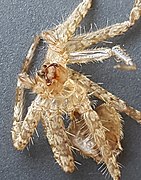Exuviae
In biology, exuviae are the remains of an exoskeleton and related structures that are left after ecdysozoans (including insects, crustaceans and arachnids) have moulted. The exuviae of an animal can be important to biologists as they can often be used to identify the species of the animal and even its sex.
As studying insects, crustaceans, or arachnids directly is not always possible, and because exuviae can be collected fairly easily, they can play an important part in helping to determine some general aspects of a species' overall life cycle such as distribution, sex ratio, production, and proof of breeding in a habitat.
The Latin word exuviae,[1] meaning "things stripped from a body", is found only in the plural.[2] Exuvia is a derived singular form that is becoming more common, although this is a neologism, and not attested in texts by Roman authors. A few modern works use the singular noun exuvium (e.g.[3]). Only a single historical work by Propertius uses the singular form exuvium, but in the meaning "spoils, booty".[4]
Gallery[]
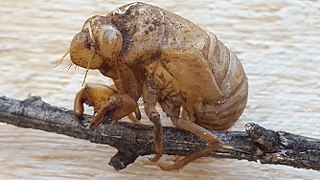
Cicada Platypleura
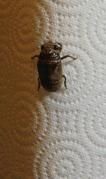
Accelerated view of a cicada molting
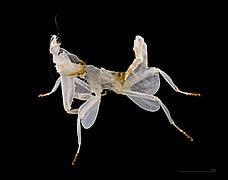
Orchid mantis
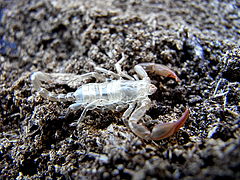
Scorpion

Dragonfly Anax imperator

Emergent monarch butterfly clinging to exuviae
References[]
- ^ "Charlton T. Lewis, An Elementary Latin Dictionary, exuviae". Retrieved July 25, 2016.
- ^ "Exuviae". Lewis and Short Latin Lexicon. The Archimedes Project. Retrieved 21 September 2014.
- ^ "The final instar exuvium of Pycna semiclara Germar, 1834 (Hemiptera: Cicadidae)" - John M. Midgley, Nicolette Bouwer and Martin H. Villet
- ^ "Charlton T. Lewis, An Elementary Latin Dictionary, exuvium". Retrieved July 25, 2016.
External links[]
| Wikimedia Commons has media related to Exuvia. |
- Insect anatomy
- Spider anatomy
- Insect anatomy stubs
